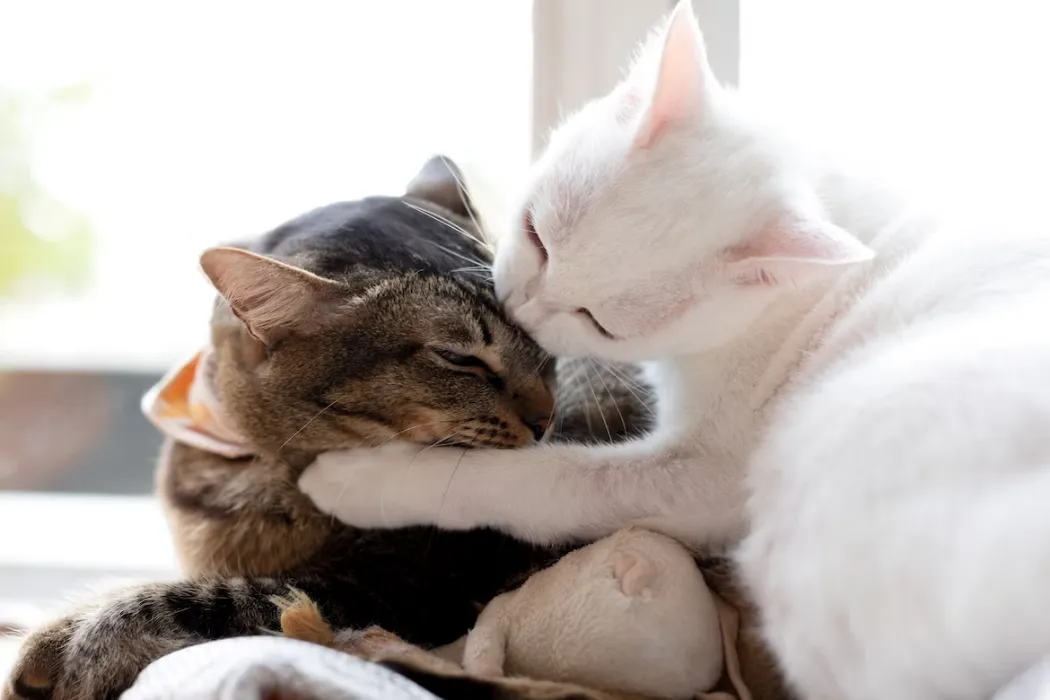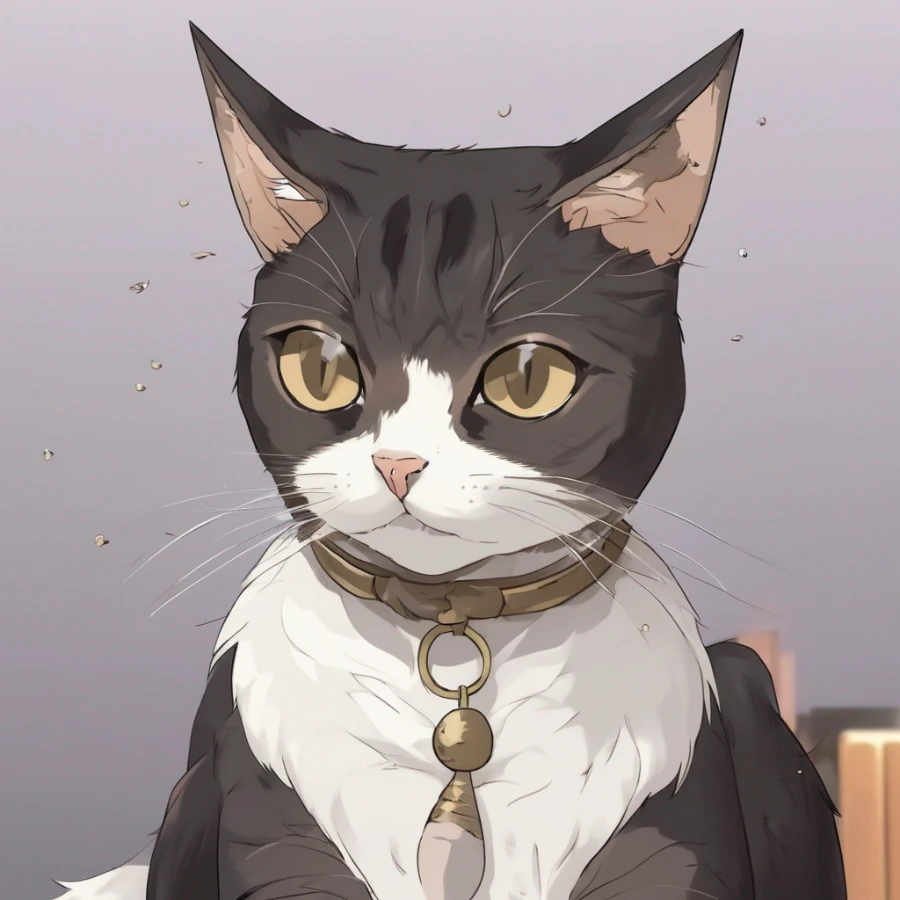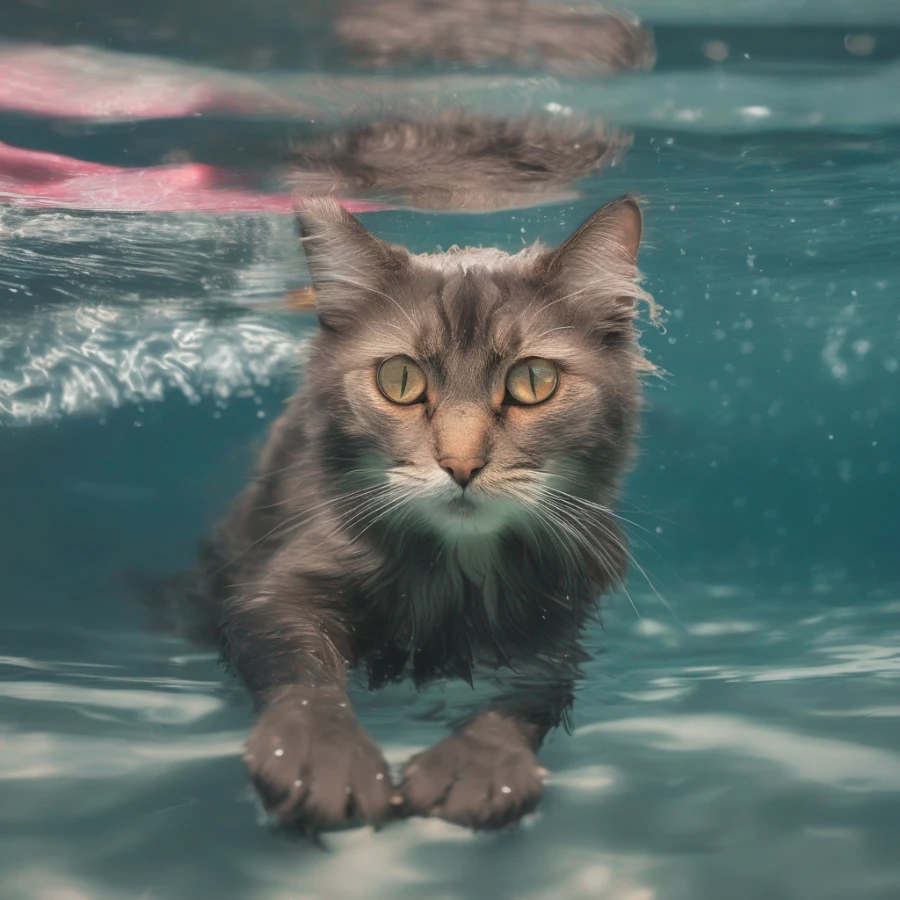How To Tell If Cats Are Playing or Fighting

Published by: CatsLib
8 Min Read
Play Behavior:
Non-threatening Postures: Cats engaged in play often have more relaxed body language. They may take turns chasing each other, rolling around, and pouncing without displaying signs of fear or aggression.
Alternating Roles: Playful cats will switch roles between being the chaser and the one being chased. This demonstrates a mutual understanding and willingness to engage in a back-and-forth game.
Paws and Claws: During play, cats may use their paws and claws, but they usually keep their claws retracted or only apply minimal pressure. This is in contrast to fighting, where they may use their claws with more force.
Playful Vocalizations: Cats at play might make a variety of playful sounds, like chirping, trilling, or soft meowing. These vocalizations are often signs of excitement and enjoyment.
Relaxed Tail Movements: A cat's tail might be held upright or twitching slightly during play. This can indicate their enthusiasm and engagement in a playful interaction.
Fighting Behavior:
Stiff Body Postures: Cats in a fight tend to have stiff body postures. They might arch their backs, raise their fur (piloerection), and hold their tails low or tucked between their legs.
Unbroken Stares: During a fight, cats may maintain intense, unbroken eye contact with each other. This is a sign of tension and potential aggression.
Growling and Hissing: Cats involved in a fight are more likely to emit growling, hissing, or even yowling sounds. These vocalizations express distress or aggression.
Extended Claws: In a fight, cats will often extend their claws fully, and their swipes may be forceful and intended to cause harm.
Injuries: Actual fights can lead to injuries such as scratches, bite marks, and patches of fur missing from the body. Playful interactions are less likely to result in such injuries.
One-sided Chasing: If one cat is consistently chasing and cornering the other, and the chased cat appears fearful or agitated, it might not be play but rather a bullying or aggressive behavior.
Keep in mind that the line between play and aggression can sometimes blur, especially if the play becomes too rough. If you're unsure whether your cats are playing or fighting, it's always a good idea to observe them closely and intervene if you see signs of escalating aggression or distress. If you're concerned about their behavior, seeking advice from a veterinarian or a professional animal behaviorist can provide valuable insights.
What Do Cats Like To Play With
Cats have a wide range of play preferences, and their individual personalities can influence what types of toys they enjoy. Here are some popular types of toys and play activities that many cats tend to enjoy:
Interactive Toys: Toys that require your cat to engage with them, such as puzzle feeders or treat-dispensing toys, can provide mental stimulation and challenge their problem-solving skills.
Feather Wands: These toys mimic the movements of birds or insects, and many cats love chasing and pouncing on the feathers.
Laser Pointers: Laser pointers can trigger your cat's natural hunting instincts. However, always provide a tangible "catch" at the end of the laser's path, like a treat or a toy, to prevent frustration.
Balls: Small, lightweight balls that can be batted around are classic favorites. Some cats enjoy carrying them in their mouths as well.
Catnip Toys: Many cats are attracted to catnip, and toys filled with catnip can provide hours of entertainment. Remember that not all cats react to catnip, so observe your cat's response.
Crinkly Toys: Toys that make crinkling sounds can captivate a cat's attention. These toys often resemble the sounds of prey moving in the wild.
Small Plush Toys: Soft, small stuffed animals or plush toys can become "prey" for your cat to pounce on, carry, or wrestle with.
Ping Pong Balls: These lightweight balls are easy for cats to bat around, providing both mental and physical stimulation.
Paper Bags and Boxes: Simple items like paper bags, cardboard boxes, and tunnels can offer hiding spots and places to pounce from, which many cats enjoy.
Dangling Toys: Toys that dangle from strings or poles can encourage jumping, swatting, and overall active play.
Fishing Rod Toys: Toys attached to a string and pole mimic the movements of small prey, and cats often find these toys irresistible.
Sisal or Feathered Mice: Small toys made from materials like sisal or feathers can be satisfying for cats to bat around and carry in their mouths.
Remember to rotate your cat's toys regularly to keep things interesting, and always supervise playtime to ensure their safety. Cats have different play preferences, so observe your cat's reactions to different toys and adjust accordingly to provide a mix of mental and physical stimulation.

How Do Cats Play With Each Other
Cats engage in various play behaviors when interacting with each other. Play is a significant aspect of their social development, allowing them to refine hunting skills, establish social hierarchies, and maintain physical fitness. When cats play together, they typically mimic hunting and fighting behaviors, but it's crucial to understand that play should always remain non-aggressive and enjoyable for all involved parties.
Chasing is a common play behavior among cats. One cat assumes the role of the chaser, while the other becomes the one being chased. This reciprocal dynamic signifies agreement in the playful game.
Pouncing is another behavior cats exhibit during play. Cats imitate stalking and capturing prey by pouncing on each other. This helps enhance their agility and coordination.
Wrestling is part of their play repertoire too. Cats engage in mock wrestling, rolling around and grappling with each other. This playful activity helps them practice physical skills and maintains social bonds.
Stalking is observed as well. Cats lower their bodies and move stealthily, imitating the hunting posture. This behavior allows them to refine their predatory instincts.
During play, cats may gently bite or nip each other without causing harm. These bites are typically inhibited and not aggressive.
Grooming is a sign of trust and bonding among cats. While not strictly play, mutual grooming can occur during or after play sessions.
Playful cats may bat at each other's tails, ears, or paws in a friendly and non-harmful manner.
Role reversal is common, ensuring both cats alternate between being the "aggressor" and the "victim."
Cats often vocalize with chirping or chattering sounds while observing play or interacting with toys. These sounds mimic noises made during hunting.
Paw play involves batting at each other's paws playfully, replicating the movements involved in hunting and capturing prey.
It's crucial to differentiate between playful behavior and genuine aggression. Playful interactions exhibit relaxed body language, controlled bites and claws, and a lack of fearful or hostile cues. If aggression escalates or distress is observed, intervention and redirection to positive play are advised. Monitoring their interactions ensures a safe and enjoyable playtime for all.



